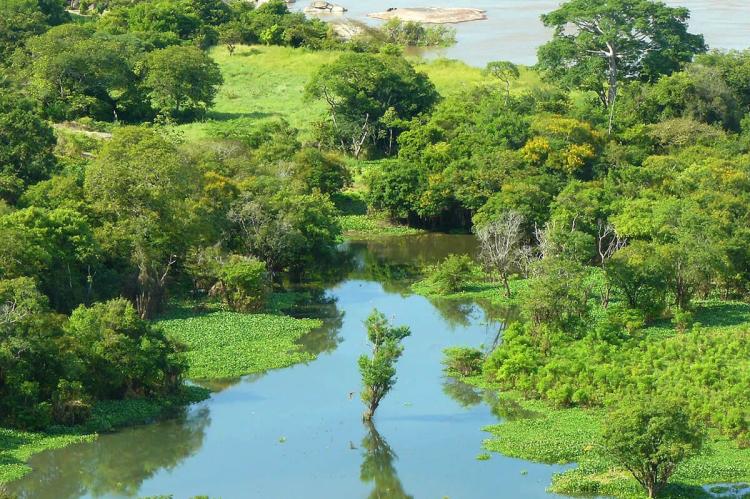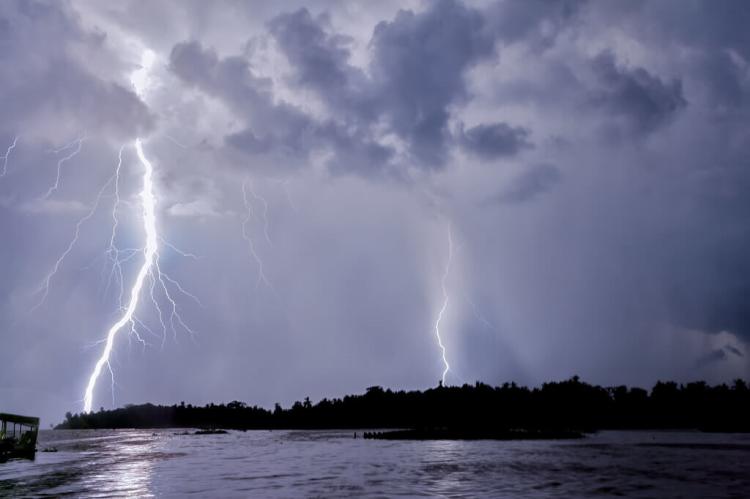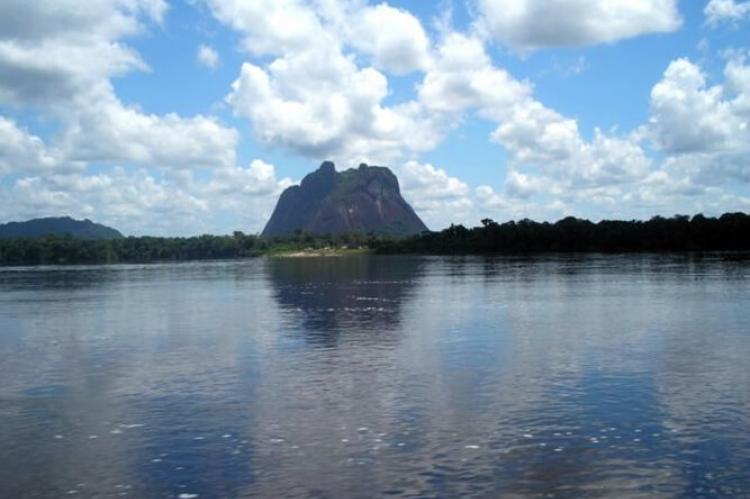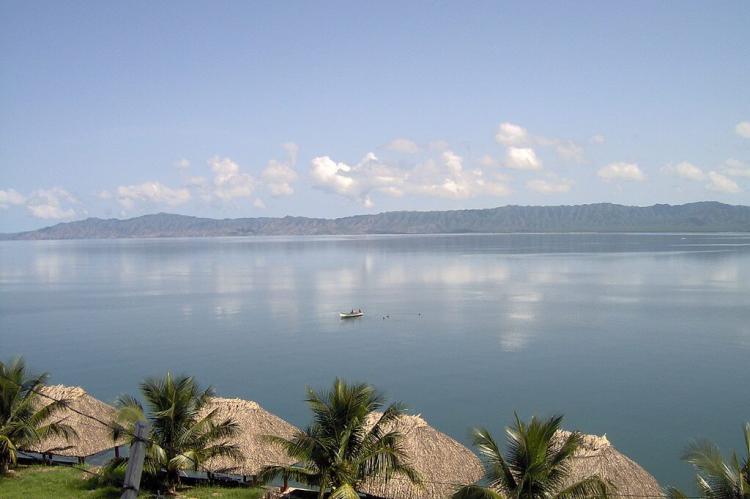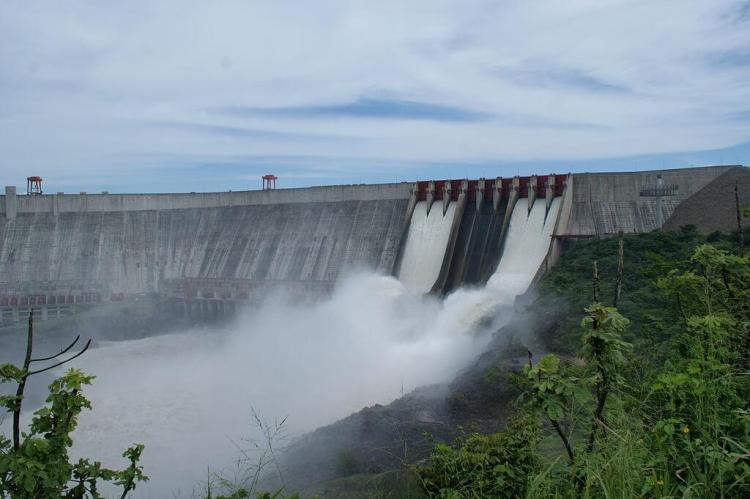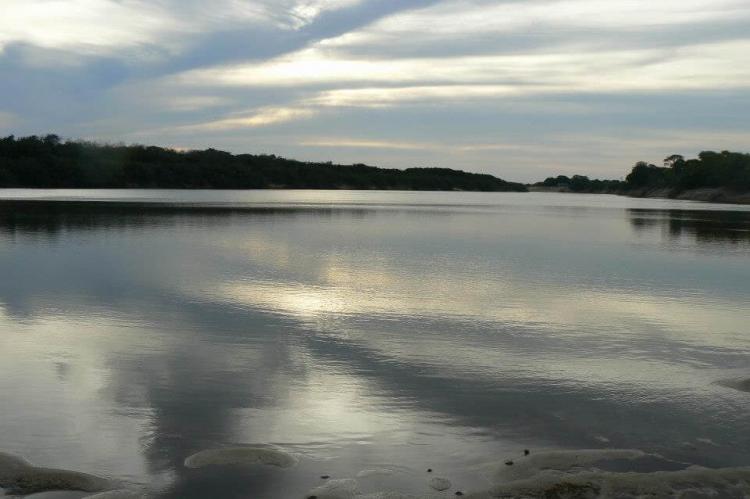Water Bodies of Venezuela
Nestled on the northern coast of South America, Venezuela is blessed with a rich tapestry of water bodies that intricately shape its geography and ecosystems. They provide habitats for aquatic species, facilitate transportation and agriculture, and sustain indigenous communities.
Water Bodies of Venezuela
Nestled on the northern coast of South America, Venezuela is blessed with a rich tapestry of water bodies that intricately shape its geography, ecosystems, and human endeavors.
At the heart of Venezuela's aquatic landscape lies the mighty Orinoco River, a colossal waterway that ranks among the continent's most significant and consequential. Flowing through the country's interior, the Orinoco is a lifeline, threading its way through dense rainforests and fertile plains, connecting remote regions and bustling urban centers alike.
Beyond the Orinoco, Venezuela boasts the stunning expanse of Lake Maracaibo, South America's largest lake and a natural wonder revered for its breathtaking beauty and ecological significance. Its tranquil waters harbor a wealth of biodiversity, sustaining diverse ecosystems and providing a sanctuary for countless species of flora and fauna.
These water bodies are not merely geographical features but vital conduits that sustain life in Venezuela. With its extensive network of tributaries, the Orinoco River is a crucial transportation route, facilitating the movement of goods and people across vast distances. Meanwhile, the fertile plains of the Llanos, nourished by the river's waters, support thriving agricultural communities, cultivating crops that sustain Venezuela's economy and feed its population.
Moreover, the diverse habitats created by Venezuela's water bodies provide essential ecosystems for many aquatic species, from freshwater fish to migratory birds. These habitats are a source of biodiversity and a vital resource for indigenous communities, who rely on the rivers and lakes for sustenance, cultural practices, and spiritual connection.
Gulfs, Bays, and Coastal Lagoons
Gulf of Venezuela (Golfo de Venezuela): The Gulf of Venezuela is a large gulf in the country's northwest. It is an extension of the Caribbean Sea bordered by Venezuela's Zulia and Falcón states to the east and west, respectively, and Colombia to the north. The gulf is known for its unique brackish water, resulting from freshwater from the Lake Maracaibo basin and saltwater from the Caribbean Sea.
Gulf of Cariaco (Golfo de Cariaco): The Gulf of Cariaco is situated in northeastern Venezuela, east of Cumaná. It is a deep and elongated gulf known for its rich biodiversity and productive fishing grounds. The gulf's clear waters make it a popular destination for boating and water sports.
Gulf of Paria (Golfo de Paria): The Gulf of Paria is located between northeastern Venezuela and the island of Trinidad and Tobago. It is a large, shallow gulf with complex tidal patterns. The gulf's rich mudflats and mangrove forests support diverse bird and marine life, making it an ecologically significant area.
Gulf of Los Frailes (Golfo de Los Frailes): The Gulf of Los Frailes is a small gulf located on the northeastern coast of Venezuela, near Carúpano. It is known for its pristine beaches and is popular among tourists seeking sun and relaxation.
Gulf of Cumaná (Golfo de Cumaná): The Gulf of Cumaná is located in northeastern Venezuela, near the city of Cumaná. It is an important fishing area and a hub for maritime trade.
Boca Grande (Gran Mouth): Boca Grande is a bay located at the western entrance of the Gulf of Paria, separating the mainland from the island of Trinidad. It is a busy waterway for maritime traffic between Venezuela and Trinidad and Tobago.
Gulf of Santa Fe (Golfo de Santa Fe): The Gulf of Santa Fe is a small gulf located on the eastern coast of Venezuela, near Santa Fe. It is known for its beautiful beaches and tranquil waters.
Ciénaga de Ocumare: Ciénaga de Ocumare is a coastal lagoon located in the state of Aragua. It is an important wetland area that provides habitat for various bird species and other wildlife.
Laguna de Tacarigua (Tacarigua Lagoon): Located in the state of Miranda, Laguna de Tacarigua is a large coastal lagoon popular for birdwatching and other recreational activities.
Laguna de Unare (Unare Lagoon): Laguna de Unare is a coastal lagoon located in the state of Anzoátegui. It is an important fishing area and a significant wetland ecosystem.
Notable Lakes and Inland Lagoons
Lake Maracaibo (Lago de Maracaibo): Lake Maracaibo is the largest lake in South America and one of the oldest on the continent. It is located in the northwestern part of Venezuela and is connected to the Gulf of Venezuela and the Caribbean Sea by a narrow strait. The lake's rich oil reserves make it an essential resource for the country's economy. It also plays a crucial role in the local ecosystem, supporting diverse wildlife and bird species.
Lake Valencia (Lago de Valencia): Lake Valencia is the third-largest lake in Venezuela. It is situated in the central part of the country, near the city of Valencia. It is a freshwater lake that serves as an essential water source for the surrounding region. However, it has experienced environmental challenges, such as pollution and sedimentation, which have affected its ecological health.
Lake Guri (Embalse de Guri): Lake Guri is an artificial reservoir formed by the Guri Dam on the Caroní River in southeastern Venezuela. It is one of the largest reservoirs in the world and a crucial source of hydroelectric power for the country. The reservoir's creation has resulted in the flooding of vast areas, leading to the relocation of communities and the alteration of natural ecosystems.
Lake Tacarigua (Lago de Tacarigua): Also known as Lake Valencia II, Lake Tacarigua is an artificial reservoir located in the state of Miranda, close to Caracas. The Tacarigua Dam formed it and serves as a source of drinking water and recreational activities for nearby communities.
Laguna de Mucubají: Located in the Mérida State, Laguna de Mucubají is a beautiful high-altitude lagoon surrounded by the Andes Mountains. It is part of the Sierra Nevada National Park and is a popular destination for nature enthusiasts and hikers.
Laguna de Sinamaica: Laguna de Sinamaica is a large lagoon near Lake Maracaibo in Zulia. It is an important wetland area and supports a diverse range of aquatic plants and wildlife. The indigenous Wayuu people inhabit the region and depend on the lagoon's resources for their livelihoods.
Laguna de Urao (Urao Lagoon): Located in the Mérida State, Laguna de Urao is a stunning mountain lagoon surrounded by cloud forests. Its pristine waters and scenic surroundings make it a popular spot for tourists and nature lovers.
Laguna de Los Cedros: Laguna de Los Cedros is a small but picturesque lagoon in Mérida. It is known for its tranquil atmosphere and the surrounding paramo vegetation.
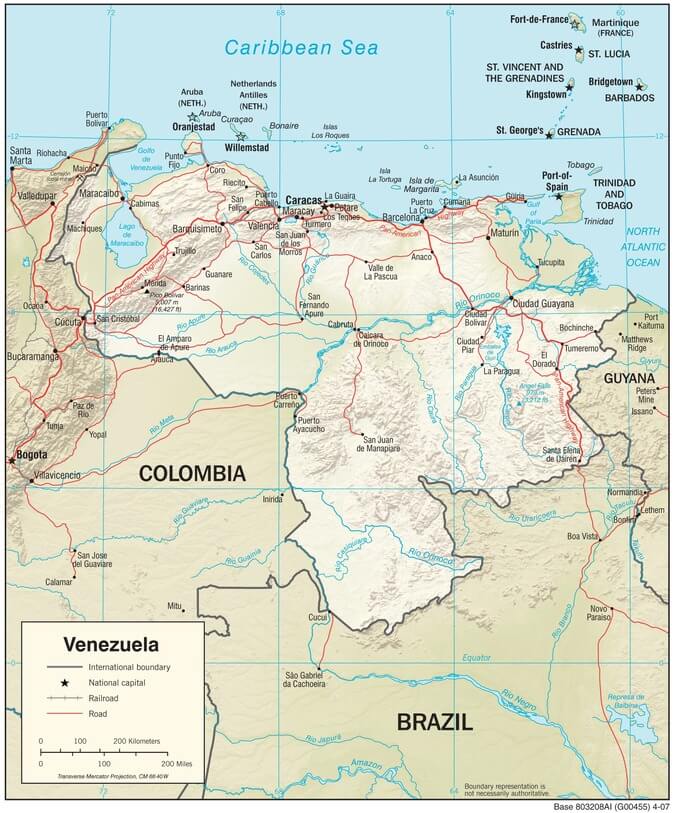
Venezuela physiographic map
Notable Dams and Reservoirs
Guri Dam (Represa del Guri): The Guri Dam, officially known as the Simón Bolívar Hydroelectric Plant, is one of the largest dams in the world and a crucial source of hydroelectric power for Venezuela. It is located on the Caroní River in the southeastern state of Bolívar. The reservoir created by the dam, known as Lake Guri, is vast and provides much of the country's electricity. However, the dam's construction led to flooding large areas of the surrounding rainforest, resulting in environmental and social impacts.
Macagua Dam (Represa de Macagua): The Macagua Dam is another significant hydroelectric project on the Caroní River, downstream from the Guri Dam. It was constructed to generate electricity and is essential to Venezuela's power infrastructure.
Caruachi Dam (Represa de Caruachi): The Caruachi Dam is the third major hydroelectric facility on the Caroní River, downstream of the Guri and Macagua Dams. It is part of the Caroní River Hydroelectric Complex and contributes to Venezuela's electricity supply.
La Vueltosa Dam (Represa de La Vueltosa): The La Vueltosa Dam, also known as Antonio José de Sucre Dam, is located on the Santo Domingo River in the western state of Táchira. It provides water for irrigation and generates electricity for the region.
Camatagua Dam (Represa de Camatagua): The Camatagua Dam is located on the Camatagua River in the state of Aragua. It is a critical water supply source for the capital city, Caracas, and the surrounding region.
Laguna de Tacarigua Reservoir (Embalse de Tacarigua): This reservoir, also known as Lake Tacarigua, was formed by the Tacarigua Dam on the Tuy River. It provides drinking water and supports recreational activities for nearby communities.
Manuelote Dam (Represa de Manuelote): The Manuelote Dam is situated in the state of Barinas. It was constructed for irrigation purposes and supports agricultural activities in the region.
Peña Larga Dam (Represa de Peña Larga): The Peña Larga Dam is located in the western state of Trujillo. It serves as a water supply source for irrigation and human consumption.
Notable Rivers
These are some of Venezuela's notable rivers, each contributing to the country's diverse landscapes, ecosystems, and cultural heritage. The rivers of Venezuela are essential for transportation, agriculture, and supporting unique habitats, making them significant natural resources.
Orinoco River (Río Orinoco): The Orinoco River is one of the longest rivers in South America and the third-longest in the continent. It originates in the Guiana Highlands of southeastern Venezuela, near the border with Brazil, and flows for approximately 2,140 km (1,330 mi) in a northeastern direction, passing through the vast Llanos plains, an expansive grassland region that extends across central Venezuela before emptying into the Atlantic Ocean. As it moves through the Llanos, the Orinoco River splits into numerous distributaries, forming a complex network of channels and wetlands.
Rio Negro (Río Negro): The Rio Negro is a major river in Venezuela and a significant tributary of the Amazon River. It originates in the southwestern part of Venezuela, in the dense rainforests of Amazonas state, near the border with Brazil and Colombia. The river traverses through the southern part of Venezuela, passing through the Orinoco Basin. It eventually joins with the Orinoco River near San Carlos in Amazonas state. The confluence of the Rio Negro and the Orinoco is an essential geographical point, and it marks the place where the Amazon Basin meets the Orinoco Basin.
Caroní River (Río Caroní): The Caroní River is one of the main tributaries of the Orinoco River. It originates in the Guiana Highlands and flows about 952 km (592 mi). The Caroní River is renowned for its hydroelectric power potential, with the Guri Dam, one of the largest dams in the world, constructed on its course.
Apure River (Río Apure): The Apure River flows through the Llanos plains of western Venezuela. It is approximately 1,000 km (621 mi) long and is a significant tributary of the Orinoco River. The river and its surrounding floodplains support diverse wildlife and bird species.
Meta River (Río Meta): The Meta River is another major river in the Llanos region. It is approximately 1,000 km (621 mi) long and is a tributary of the Orinoco River. The Meta River plays a crucial role in transportation and supporting local livelihoods.
Capanaparo River (Río Capanaparo): The Capanaparo River is a significant river in Venezuela's Llanos region. It originates in the western part of Apure State and flows northeastern before eventually joining the Orinoco River.
Catatumbo River (Río Catatumbo): The Catatumbo River is in western Venezuela and flows into Lake Maracaibo. It is known for the Catatumbo lightning phenomenon, where intense lightning storms occur over the river's marshy delta region.
Caura River (Río Caura): The Caura River is a major tributary of the Caroní River. It originates in the Guiana Highlands and flows for approximately 723 km (449 mi) through dense rainforests. The river is significant for its ecological importance and the preservation of pristine habitats.
Guárico River (Río Guárico): The Guárico River flows through the central part of the country, crossing the Llanos region. It is approximately 540 km (336 mi) long and supports the diverse ecosystems of the Llanos.
Chama River (Río Chama): The Chama River is in western Venezuela's Andes Mountains. It is approximately 470 km (292 mi) long and is crucial in providing water resources for agriculture and hydroelectric power generation.
Motatán River (Río Motatán): The Motatán River is located in the Andes Mountains of western Venezuela. It is approximately 128 km (80 mi) long and is an important water source for agriculture and local communities.
Tuy River (Río Tuy): The Tuy River is located in the north-central part of Venezuela and flows through the states of Miranda and Vargas. It is approximately 118 km (73 mi) long and is essential for supplying water to the capital city, Caracas.
Yuruari River (Río Yuruari): The Yuruari River is located in southeastern Venezuela and is a tributary of the Cuyuní River, which eventually joins the Essequibo River in Guyana. The river is known for its gold deposits and has been historically significant for mining activities.
Cuyuní River (Río Cuyuní): The Cuyuní River is situated in southeastern Venezuela and forms part of the border with Guyana. It is an important waterway for transportation and has been subject to disputes between Venezuela and Guyana due to its resource-rich territory.
Guaviare River (Río Guaviare): The Guaviare River forms part of the border between Venezuela and Colombia. It is a significant river in the Amazon Basin and is vital to the region's ecosystems and biodiversity.
Suapure River (Río Suapure): The Suapure River is located in southeastern Venezuela and is a major tributary of the Caura River. It flows through the pristine rainforests of the Guiana Highlands.
Ventuari River (Río Ventuari): The Ventuari River is a tributary of the Orinoco River in the southern part of Venezuela and is a tributary of the Orinoco River. It flows through remote and ecologically valuable regions.
